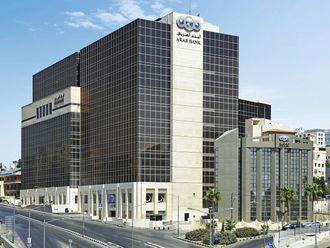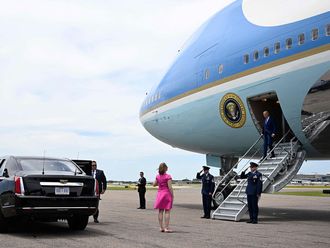Dubai: A slowdown in economic growth, resulting from the impact of lower oil prices, will weigh on banking sector funding and profitability in Bahrain over the coming 12-18 monthsm. However, banks’ strong liquidity and capital buffers will continue to provide financial flexibility to adapt to these conditions, global rating agency Moody’s has said.
Analysts at Moody’s expect slower economic growth of 2.7 per cent in 2015, from 4.5 per cent in 2014, in Bahrain as lower oil prices and lower government spending dampen operating conditions.
The rating agency recently changed its outlook on Bahrain’s banking system to negative from stable.
“We expect slower economic growth to weigh modestly on banks’ funding and profitability. At the same time, the banking system’s credit profile will remain closely linked to the weakening fiscal position of the government, as direct holdings of government securities and loans, which currently represent over two times the banks’ equity, are likely to increase further,” said Christos Theofilou, an analyst at Financial Institutions Group, Moody’s.
The Bahraini banking sector is divided into two broad segments — onshore retail and offshore wholesale banks. Onshore retail banks include 22 conventional and six Islamic banks, with total consolidated assets of $81.4 billion (30.6 billion Bahraini dinars; Dh299 billion) as of April 2015.
According to Moody’s estimates, approximately 52 per cent of assets are derived from the banks’ domestic operations, with the balance from foreign subsidiaries/operations.
Offshore wholesale banks comprise 56 conventional and 18 Islamic banks, with total consolidated assets of $111.1 billion (42 billion dinars) as of April 2015. The wholesale banks are characterised by limited participation in the domestic banking system, as their Bahraini assets account for just 7 per cent of total wholesale assets.
Analysts expect the drop in oil prices and the government’s weakened finances to weigh on the country’s banks via three broad channels, namely, increases in Bahraini banks’ already high level of direct credit exposures to government and public-sector entities; declines in consumer and investor confidence reflecting expected public spending cutbacks and slower economic growth and a reduction in the government’s reduced capacity to support if needed.
Lower projected non-oil GDP growth of 3.5 per cent during 2015-2016 from 4.9 per cent in 2014 is expected to have a knock-on effect on Bahraini banks that primarily lend to the non-oil industry. Growth in the non-oil sector shows a high correlation with government spending.
With limited oil reserves, Moody’s sees Bahrain’s ability to implement countercyclical spending to support its economy constrained. Instead, the rating agency believes that the government will strengthen its fiscal consolidation efforts by delaying or cancelling some ofits non-strategic investment projects.
Despite these challenges Bahrain’s non-oil sector growth is expected to remain relatively robust as the wider economic impact will be softened byinvestment spending financed by the GCC development fund, while other, non-oil sectors of Bahrain’s relatively diversified economy will be resilient.
Moody’s expects that in the context of growing fiscal pressures arising from reduced oil revenues, Bahrain is likely to issue more debt, both locally and internationally. Banks are expected to increase their holdings of government debt over the next 12 to 18 months. Bahrain’s debt-to-GDP ratio has risen rapidly to around 48 per cent as of year-end 2014, from 12.6 per cent at year-end 2008.
The high volume of Bahraini banks’ sovereign-related exposure (around 1.6 times their equity), in addition to their exposure to the Central Bank of Bahrain, will increasingly link the banks’ creditworthiness to that of the sovereign. Banks’ holdings of Bahraini government debt increased to 3.8 billion dinars ($1.4 billion) as of April 2015 (23.4 per cent of domestic assets), up from 407.9 million dinars as of year-end 2008.












